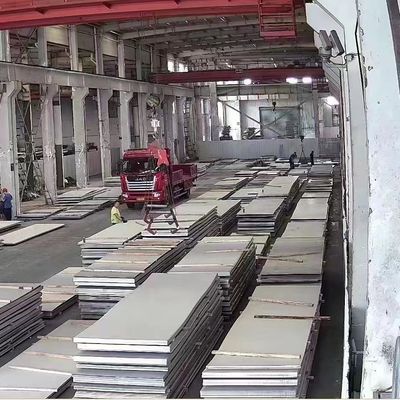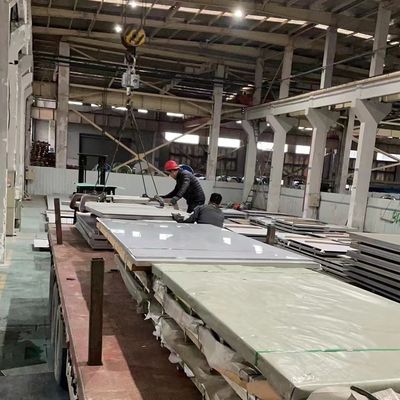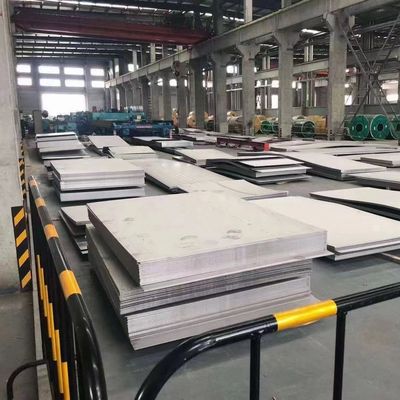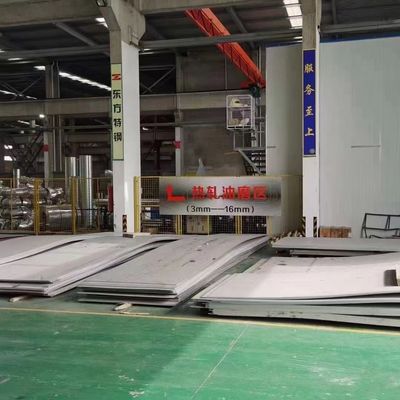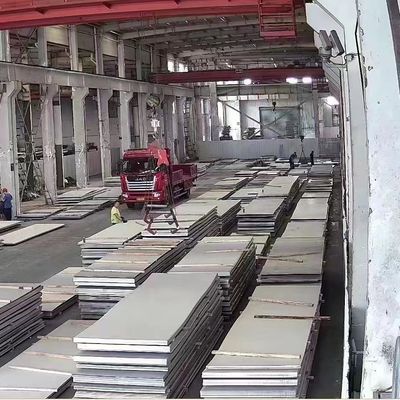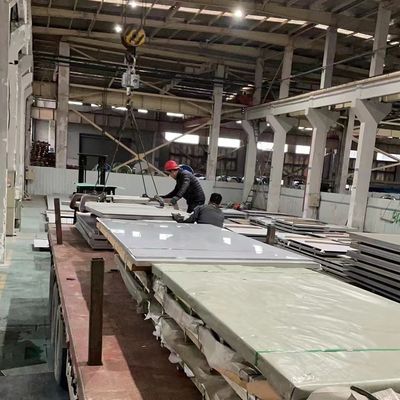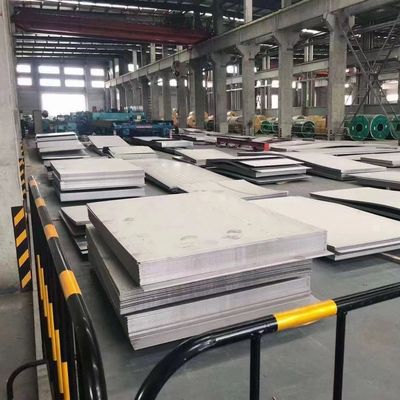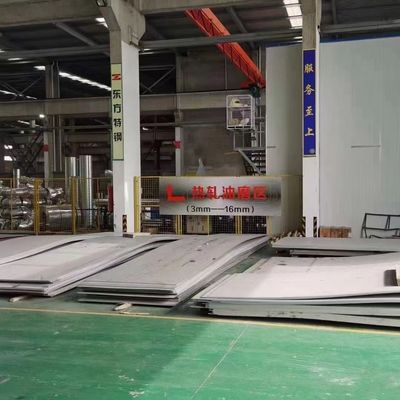-
 Raian IonescuMaterial quality very good. we have cooperate more than 10 Years. They trade lots kinds of steel material. All material quality good. They duty for all material quality. We are planing continue cooperate with them in the future
Raian IonescuMaterial quality very good. we have cooperate more than 10 Years. They trade lots kinds of steel material. All material quality good. They duty for all material quality. We are planing continue cooperate with them in the future
EN 10088-2 1.4833 Stainless Steel Plate For Boiler Parts Heat Resistant 16.0mm
| Place of Origin | China |
|---|---|
| Brand Name | TISCO BAOSTEEL |
| Certification | ISO |
| Model Number | 309S / 310S |
| Minimum Order Quantity | 500 kgs |
| Price | 4500-5500USD/Ton |
| Packaging Details | standard packing for export |
| Delivery Time | 5 - 12 days based on the quantity |
| Payment Terms | T/T, Western Union |
| Supply Ability | 20Ton per week |

Contact me for free samples and coupons.
Whatsapp:0086 18588475571
Wechat: 0086 18588475571
Skype: sales10@aixton.com
If you have any concern, we provide 24-hour online help.
x| Products | Stainless Steel Plate | Grade | 309S / 310S |
|---|---|---|---|
| Thickness | 3.0 - 16.0mm | Width | 1500mm 1219mm 1000mm 2000mm |
| Surface | NO.1 2B | Brand | TISCO |
| Standard | ASTM A240/240M | Loading Port | Shanghai Port |
| High Light | 1.4833 Stainless Steel Plate,Stainless Steel Plate for Boiler Parts,Stainless Steel Plate 16.0mm |
||
EN 10088-2 1.4845 / 1.4833 Stainless Steel Plate for Bolier Parts 1200 Degree Heat Resistant
Standard Specification Of 309S /310S Plate
| Products | 309S / 310S Stainless Steel Plate | ||||||
| Thickness | 4mm-100mm | ||||||
| Width | 1000mm, 1219mm, 1500mm, 1800mm, 2000mm, 2500mm, 3000mm, 3500mm, etc | ||||||
| Length | 2000mm, 2440mm, 3000mm, 5800mm, 6000mm, etc | ||||||
| Surface | 2B, 2D, BA, NO.1, NO.4, NO.8, 8K, mirror, checkered, embossed, hair line, sand blast, Brush, etching, etc | ||||||
| Finish | Hot rolled plate (HR), Cold rolled sheet (CR), 2B, 2D, BA NO(8), SATIN (Met with Plastic Coated) | ||||||
| Form | Coils, Foils, Rolls, Plain Sheet, Shim Sheet, Perforated Sheet, Chequered Plate, Strip, Flats, Blank (Circle), Ring (Flange) etc. |
||||||
Our high-temperature stainless steels have been specifically designed for temperatures up to 1150°C. This durability has been achieved by the addition of several significant alloying elements in the steel – ensuring superior performance across a broad spectrum of high-temperature applications.
High temperature austenitic grades
High temperature austenitic steels are commonly employed in a number of applications where the temperature exceeds 550°C.
Typical applications for high temperature austenitic grades:
- equipment and components within the iron, steel and other metallurgical industries
- engineering industry
- energy conversion plants
- cement industry
Product properties
Austenitic high temperature steels are mainly optimised for oxidation and high temperature corrosion resistance. However, they also have good mechanical properties, in part due to their austenitic structure and in part to certain alloying elements we employ.
High temperature ferritic stainless steels have broadly the same mechanical properties as their austenitic counterparts at room temperature. However, when subjected to high temperatures (> 600°C), it is possible for the creep strength to drop to just a quarter of the value an austenitic heat resistant steel would show in the same environment.
Weldability
Welding of austenitic high temperature grades
High temperature constructions are frequently exposed to thermal fatigue due to variations in temperature. For this reason it is very important to design the welded joint without notches. Furthermore it is important that welds have oxidation resistance and creep strength compatible with the parent material.
Autogenous welding of thin material is possible if full penetration can be achieved. Fillet welds without full penetration should be avoided due to risk of thermal fatigue. Optimal design would call for welds to be located in low stress areas of the equipment being fabricated.
Austenitic grades 4948, 4878 and 153 MA
The weldability of 4948, 4878 and 153 MA™ steel grades is similar to the Cr-Ni group due to ferritic solidification of the weld metal. When MAG welding is carried out with 21 10 N wire, a power source with pulse current may be necessary to obtain good weldability.
Austenitic grades 1.4833, 1.4828 and 253 MA
If high temperature grade 253 MA® is to be employed at the highest temperature range, TIG, plasma or MAG processes should be used. Welding with MAG may require modern pulse equipment and the use of special shielding gases containing Ar, He and O2/CO2 to facilitate good arc stability and improved fluidity.
Austenitic grades 1.4845 and 1.4841
These fully austenitic steels are susceptible to hot cracking, and due to this the heat input should be limited to maximum 1.0 kJ/mm. For this reason SAW should be avoided. The use of filler and a basic flux/coating will reduce the risk of hot cracking. When welding heat resistant stainless steels to carbon steels, 23Cr 12Ni fillers can be used. A nickel-base filler may be a better alternative if there is a high risk of loss of strength in the HAZ of the carbon steel. The reason is that if carbon in the construction steel may diffuse into the low carbon weld metal, the HAZ in the carbon steel will lose strength. Repair welding of exposed and damaged high temperature equipment is easily performed with MMA. Before welding, it is important to remove all magnetic areas close to the weld joint since these may contain embrittling phases. Machining or grinding are suitable methods.
Welding of ferritic high temperature grades
This group of ferritic steels are mostly used in high temperature applications with sulphurous atmospheres and/or low tensile load. They have limited weldability and the HAZ will have a ferritic-martensitic microstructure. The main alloying element in high temperature ferritic stainless steels is chromium. Its positive effect on scaling resistance is enhanced by silicon and aluminium. The two lower alloyed grades are best suited for temperatures between 550°C and 850°C. The higher alloyed ones are used at temperatures up to 1150°C and show excellent resistance to reducing sulphur-containing environments and molten metals, e.g. Cu. The alloying with aluminium also gives precipitates that reduce the sensitivity to grain growth during welding. For this reason, the steels can be produced and welded in thickness above 10 mm.
Ferritic grades 1.4713, 1.4724, 1.4742 and 1.4762
With these grades the same precautions as for carbon steels are normally required. Preheating of the joint to 200–300°C is necessary for materials thicker than 3 mm and the interpass temperatures should be in the same range. Due to grain growth in HAZ, the heat input should be minimised. Gas shielded welding methods are preferred. Pure argon should be used as shielding gas. Matching filler material has detrimental effect on the ductility which is why austenitic welding consumables, e.g. 18 8 Mn, 23 12 or 25 20 are commonly used. If the weld will be exposed to a sulphurous environment, overlay welding with matching ferritic filler will be necessary.
![]()
![]()
![]()
![]()



